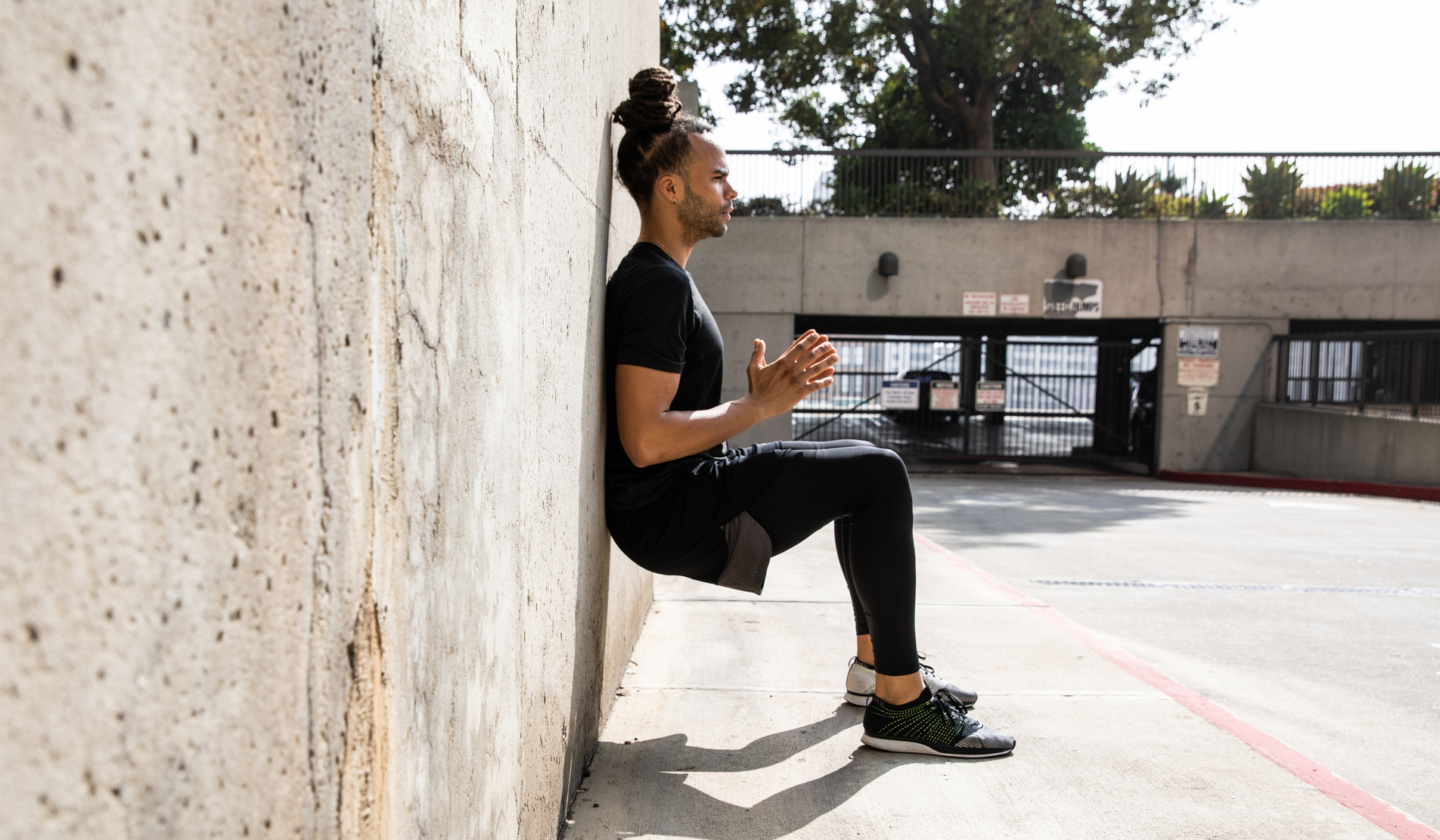Why wall sits are a joint-friendly way to get a ripped core and toned legs
Wall sits are a very simple, under-used way to get a solid core and toned legs without taxing your joints


Bodyweight exercises tend to come in two different forms: dynamic exercises, which are based on movements which change the length of the muscle, and isometric exercises, which are based on contracting a muscle without moving your joints.
If this all sounds complicated, don't worry – the key thing to know is that isometric exercises don't involve any movement. Isometric exercises include the plank, a great core exercise (see our guide on how to do a plank for more) and the wall sit.
Wall sits are a great way to train your legs, glutes and core. Wall sits involve leaning against a wall, post, tree or other hard surface and holding a position in which your thighs are parallel to the floor.
As well as the training your legs and glutes (making it a favourite for people going skiing to train up their legs) it works plenty of other muscle groups. This includes your transverse abdominis (a thin sheet of muscle running under the abdominal wall, essential for a strong core and good spine health) and your obliques, or "side abs", according to research from Korea's Nazarene University.
This makes them a great exercise for people who sit down on a regular chair all day, as our cores and legs aren't engaged for long periods.
Watch a video guide on how to do a wall sit here:
If you don't fancy getting all the way down into a plank, or working your joints with squats, the other key advantage of this move is that it's very low-impact, and requires no movement. You're leaning against a wall in a squat (or half-squat) position, and popping a stool or chair underneath you means you can practice the exercise in relative safety.
All this means it's a great exercise for people with limited mobility. If your joints ache due to arthritis or other health issues which make squatting or planking painful, the wall sit is a great way to go. It's also a great way to work up to learn how to do a squat, as you can slowly train your legs to get stronger without doing dynamic exercises.
Start your week with achievable workout ideas, health tips and wellbeing advice in your inbox.
To get started, assume the position against a wall and hold it for a period of time between 20 seconds and one minute. You can make wall sits harder by adding weights to your legs, such as gym plates or even heavy books, or hold the exercise for a longer duration.
Once your legs are feeling strong, you can even try tackling other advanced weighted exercises, such as barbell squats. barbell squats contain many of the benefits of wall sits, but also provoke a big hormonal spike according to research, encouraging all-over muscle growth. Our guide on how to do a barbell squat can help.
Matt Evans is an experienced health and fitness journalist and is currently Fitness and Wellbeing Editor at TechRadar, covering all things exercise and nutrition on Fit&Well's tech-focused sister site. Matt originally discovered exercise through martial arts: he holds a black belt in Karate and remains a keen runner, gym-goer, and infrequent yogi. His top fitness tip? Stretch.
